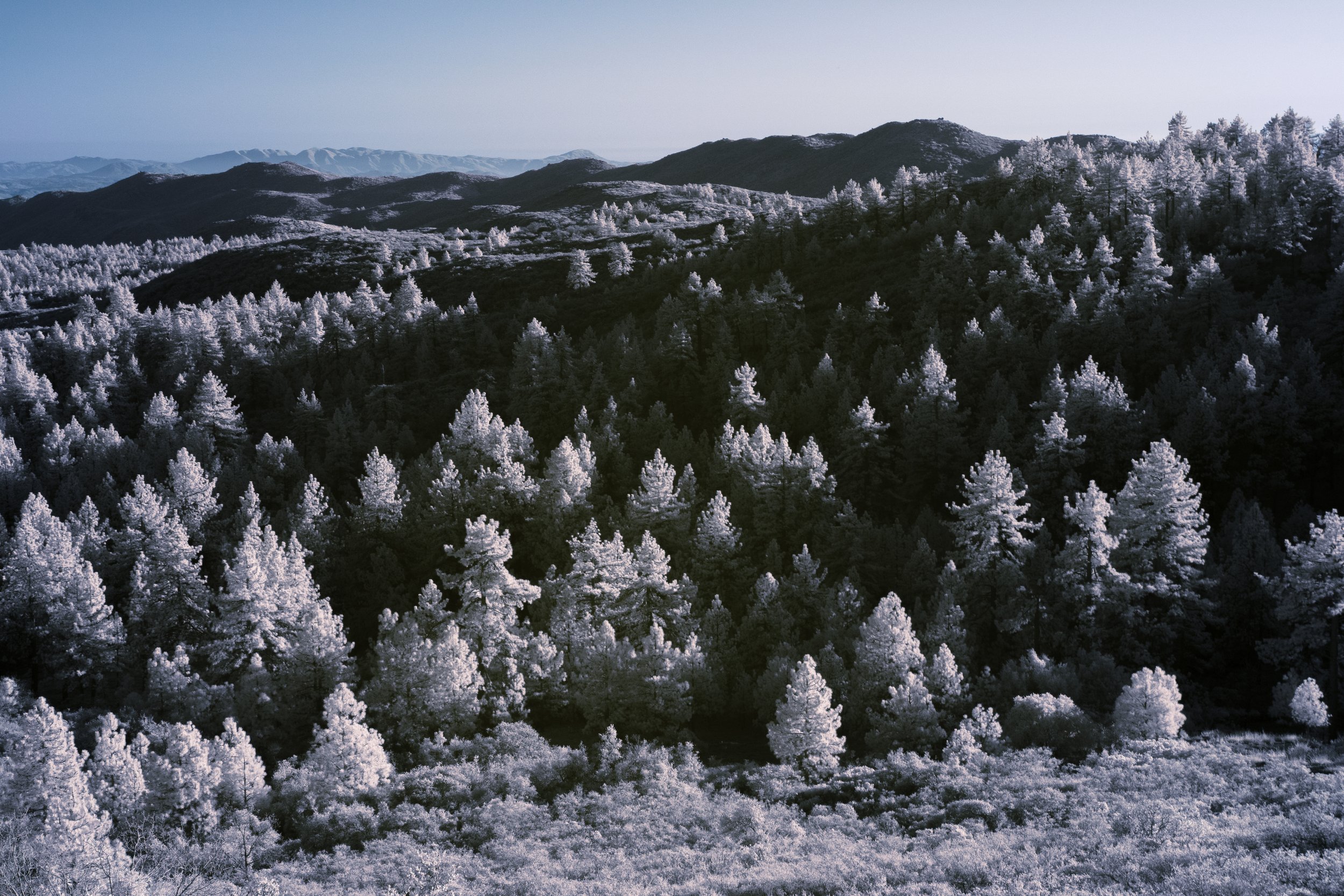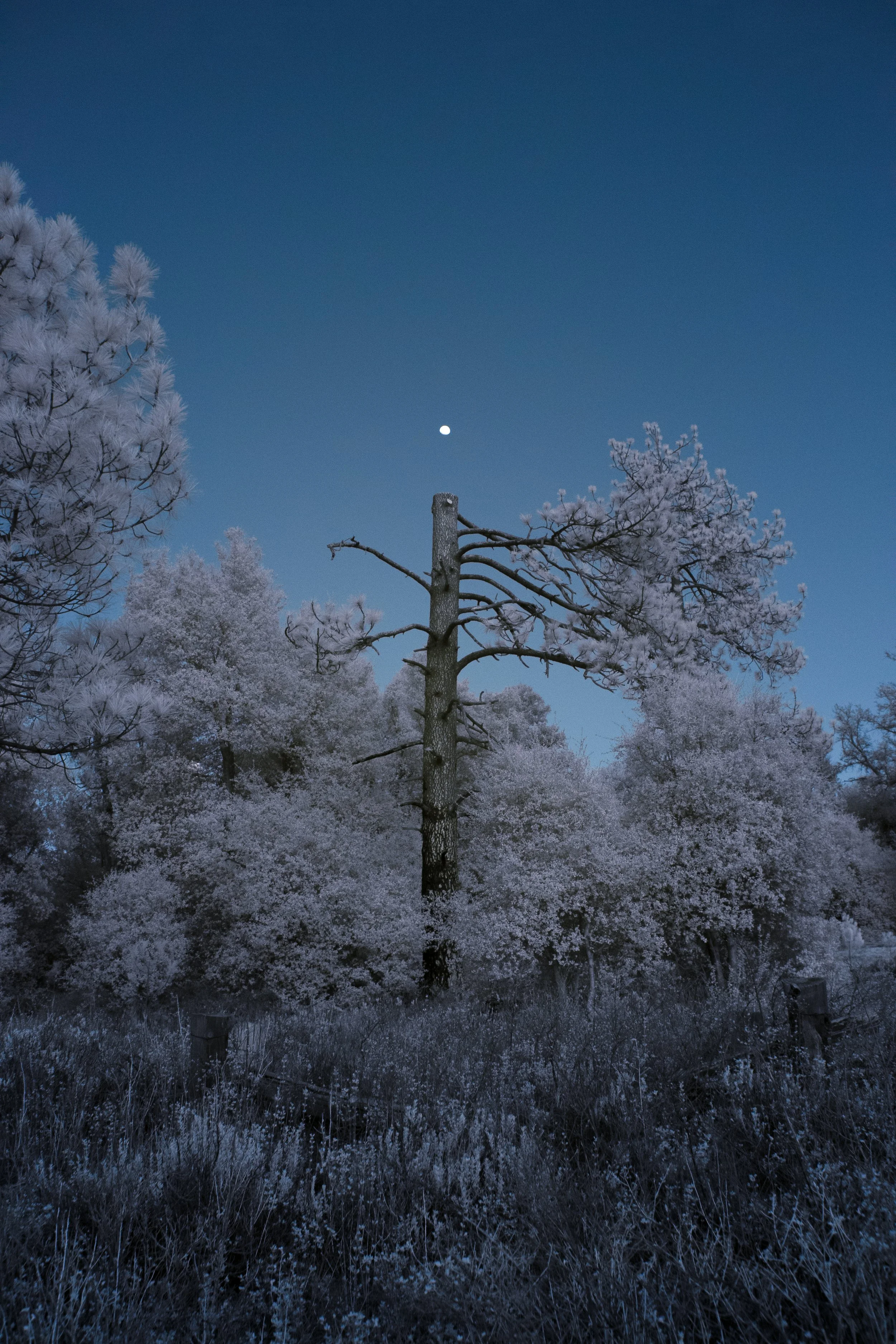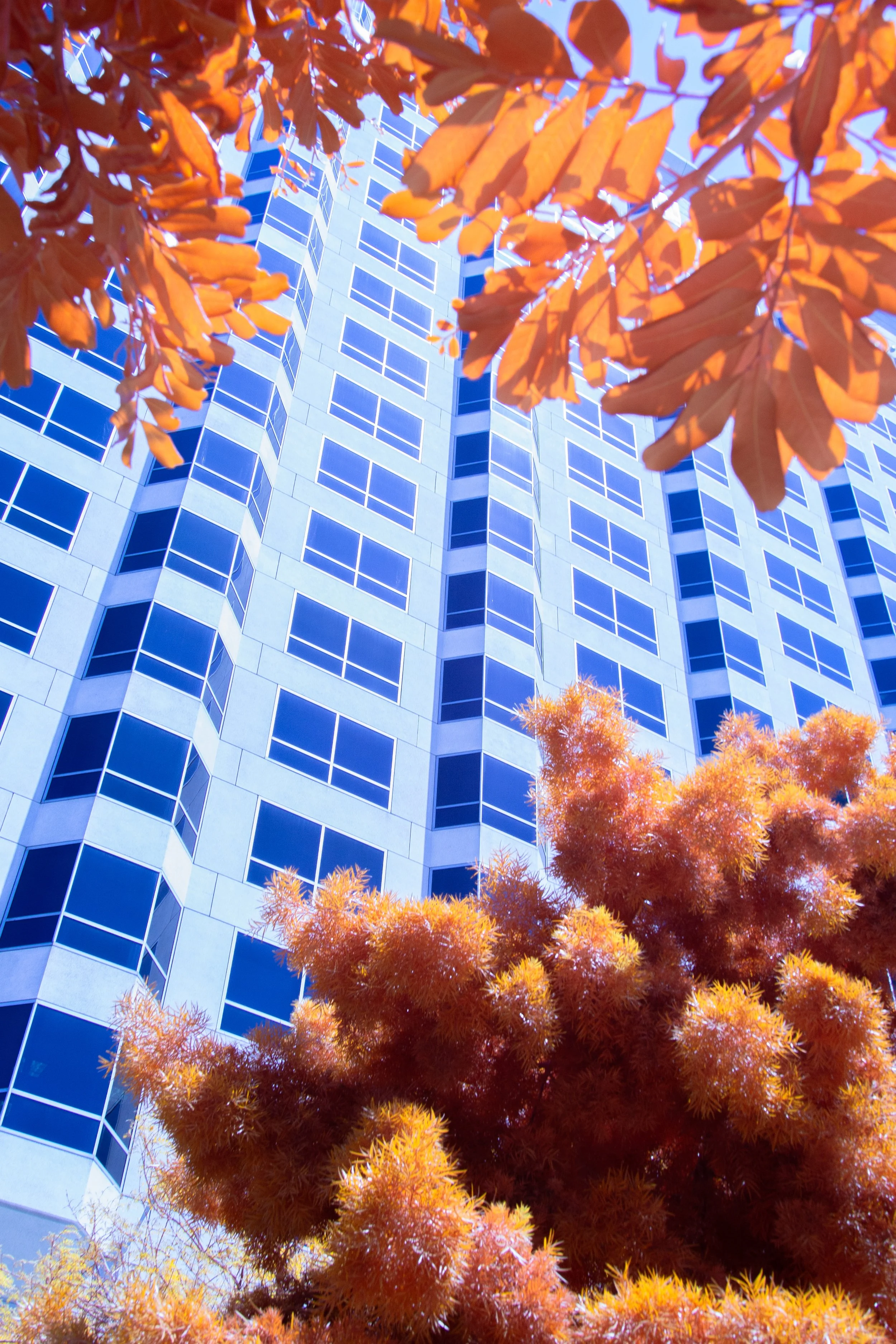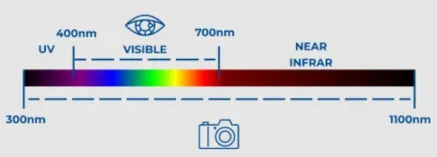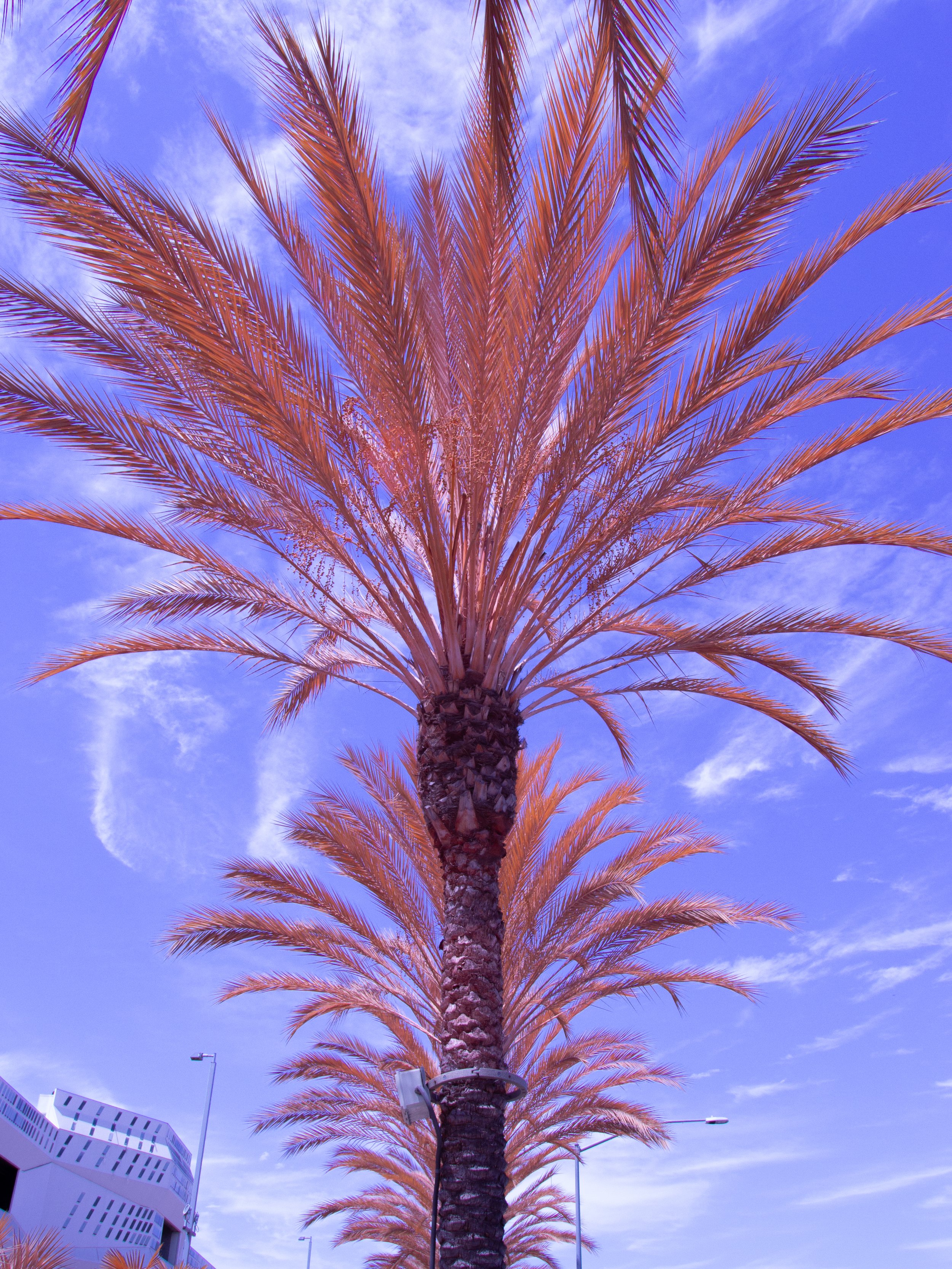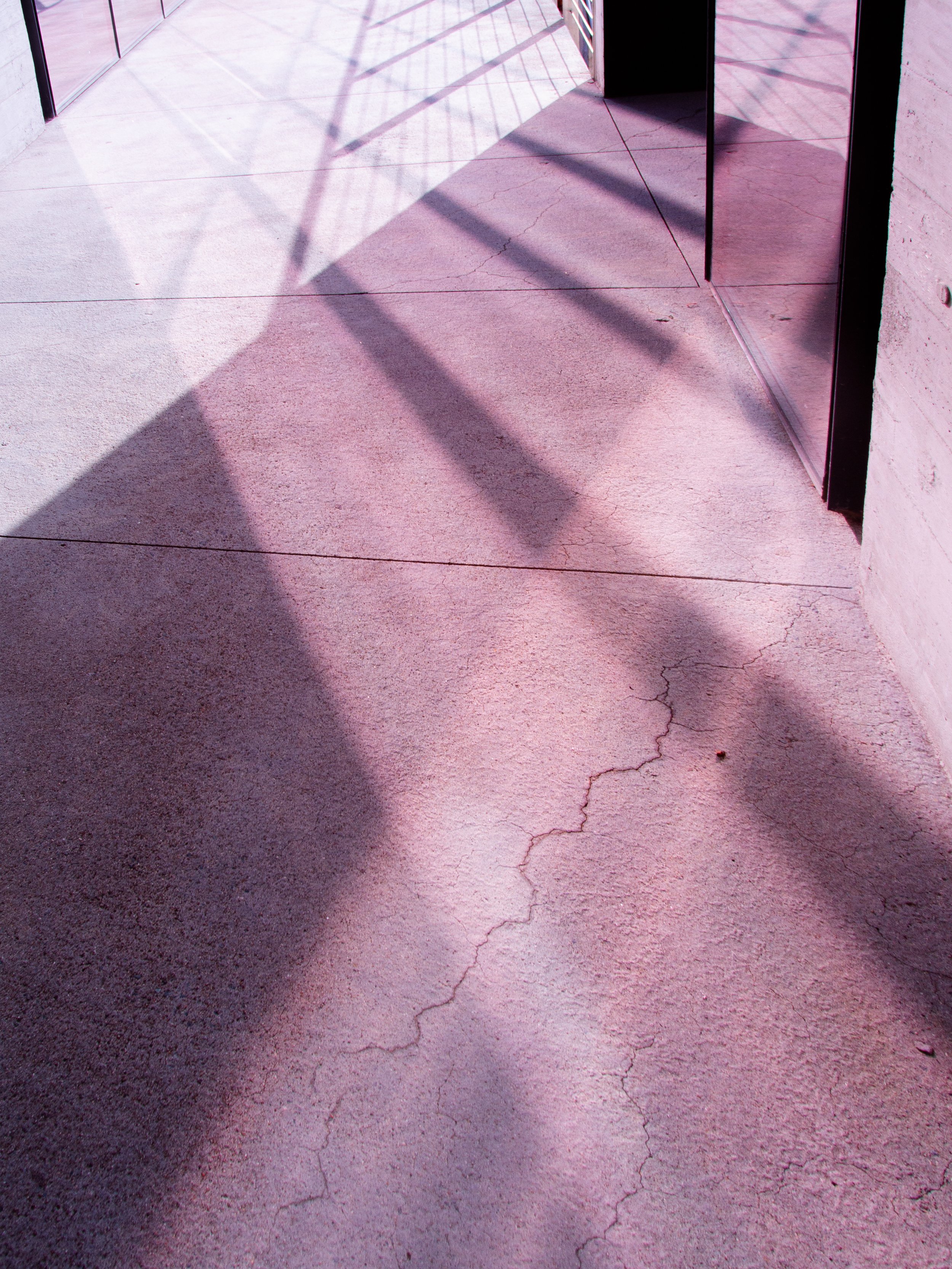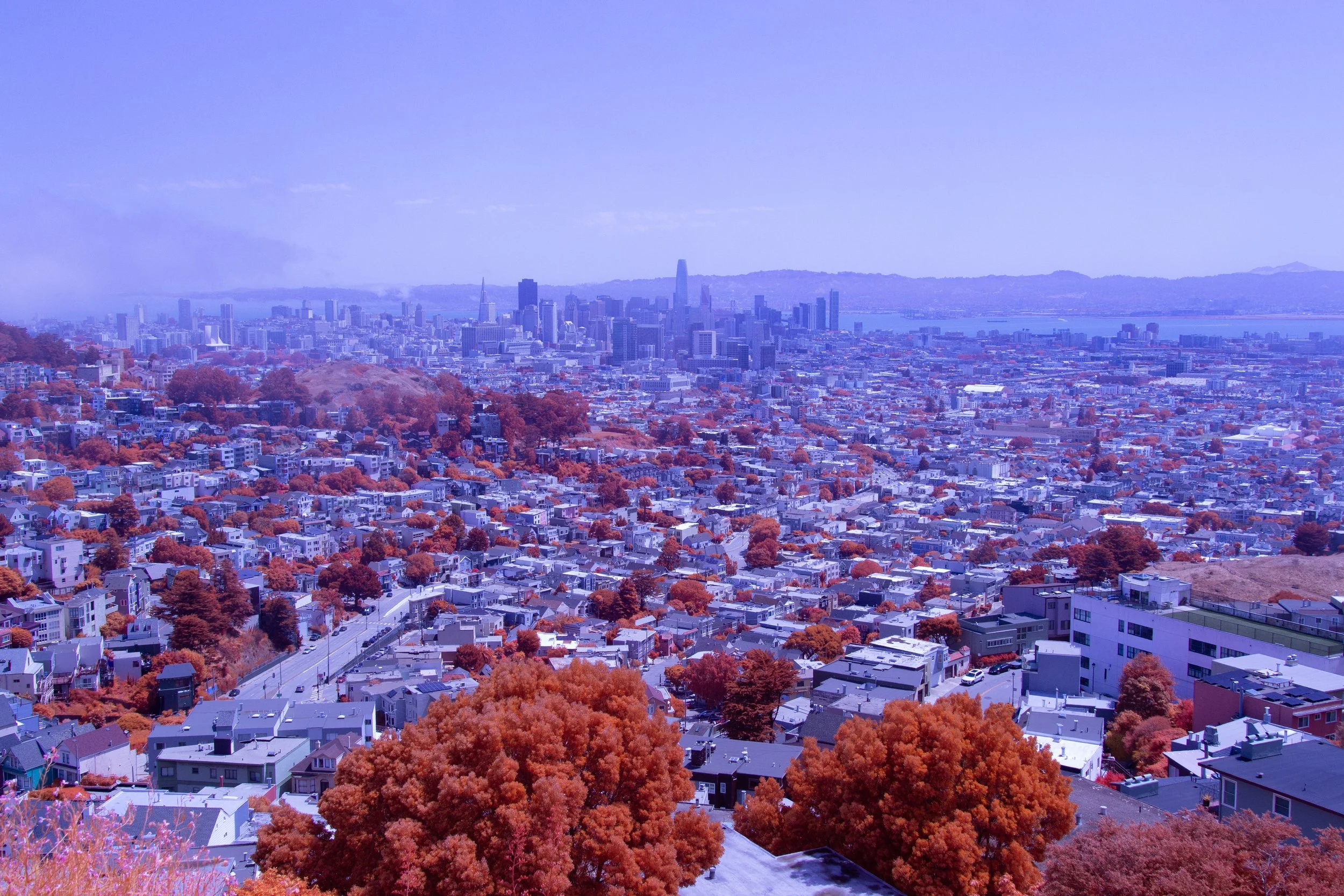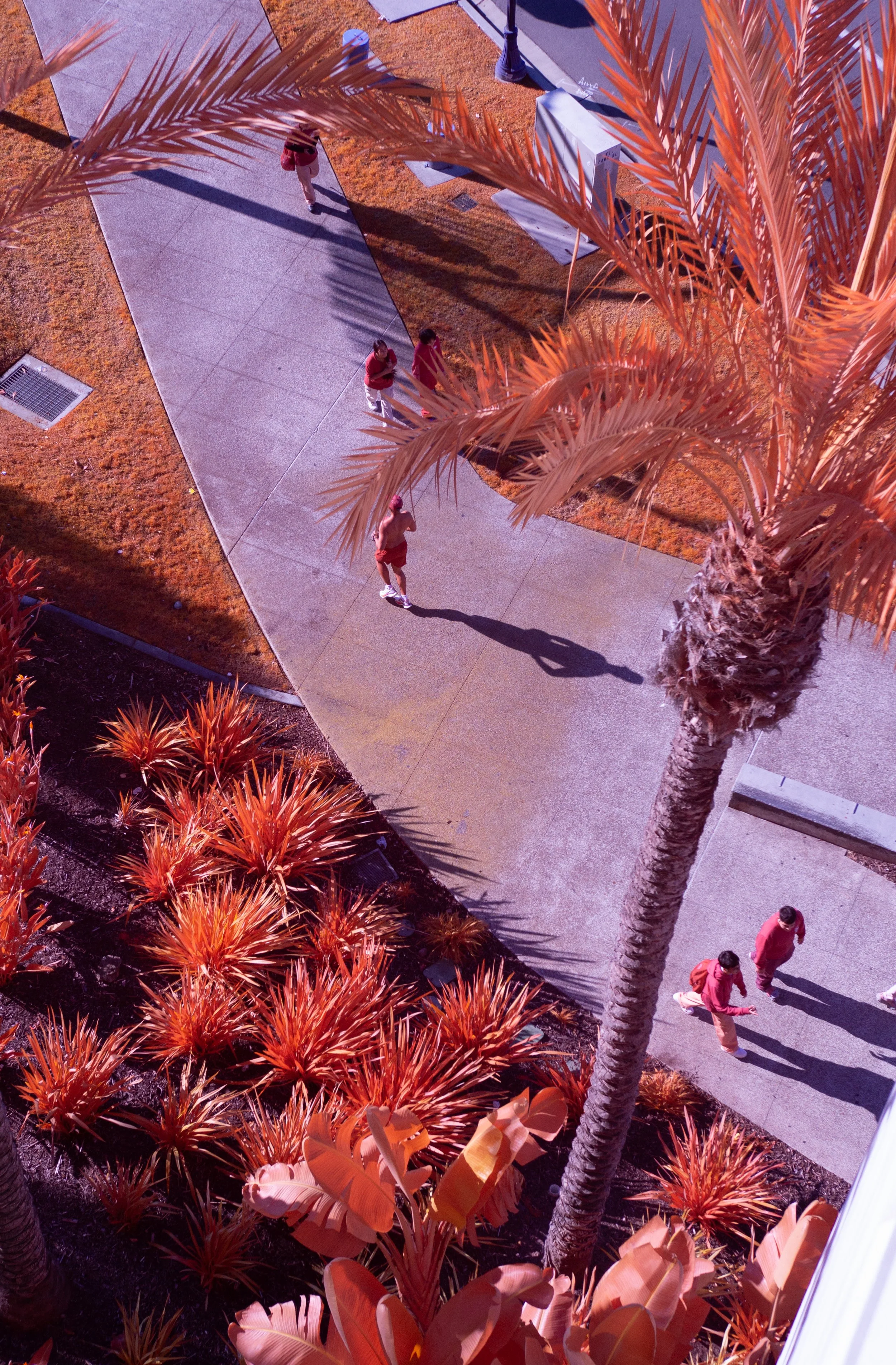Infrared Photography
In search of a new creative outlet, I came across infrared photography. It’s no secret that ambient lighting is often best when the sunlight is soft and low over the horizon. In some scenario’s its well worth it for me to plan a shot for the right time of day, but I’m often out and about during the middle of the day when light is harsh and your standard visible light landscape photo turns out dull, or overpowered by shadows. Infrared photography thrives in these conditions. The chlorophyll in the leaves of the trees reflect infrared light, creating a strong contrast from the dark skies it produces.
I have a “full spectrum” converted camera, meaning the internal UV/IR cut hot mirror filter is removed from atop the sensor in the camera’s body. From there, you can add different filters to the front of your lens to allow different wavelengths of light through to the sensor. All of my photos to this point are photographed with either an IR Chrome filter (created by Kolari Vision to mimic old Aerochrome film) and a 720nm Infrared filter also created by Kolari Vision.
FULL SPECTRUM















